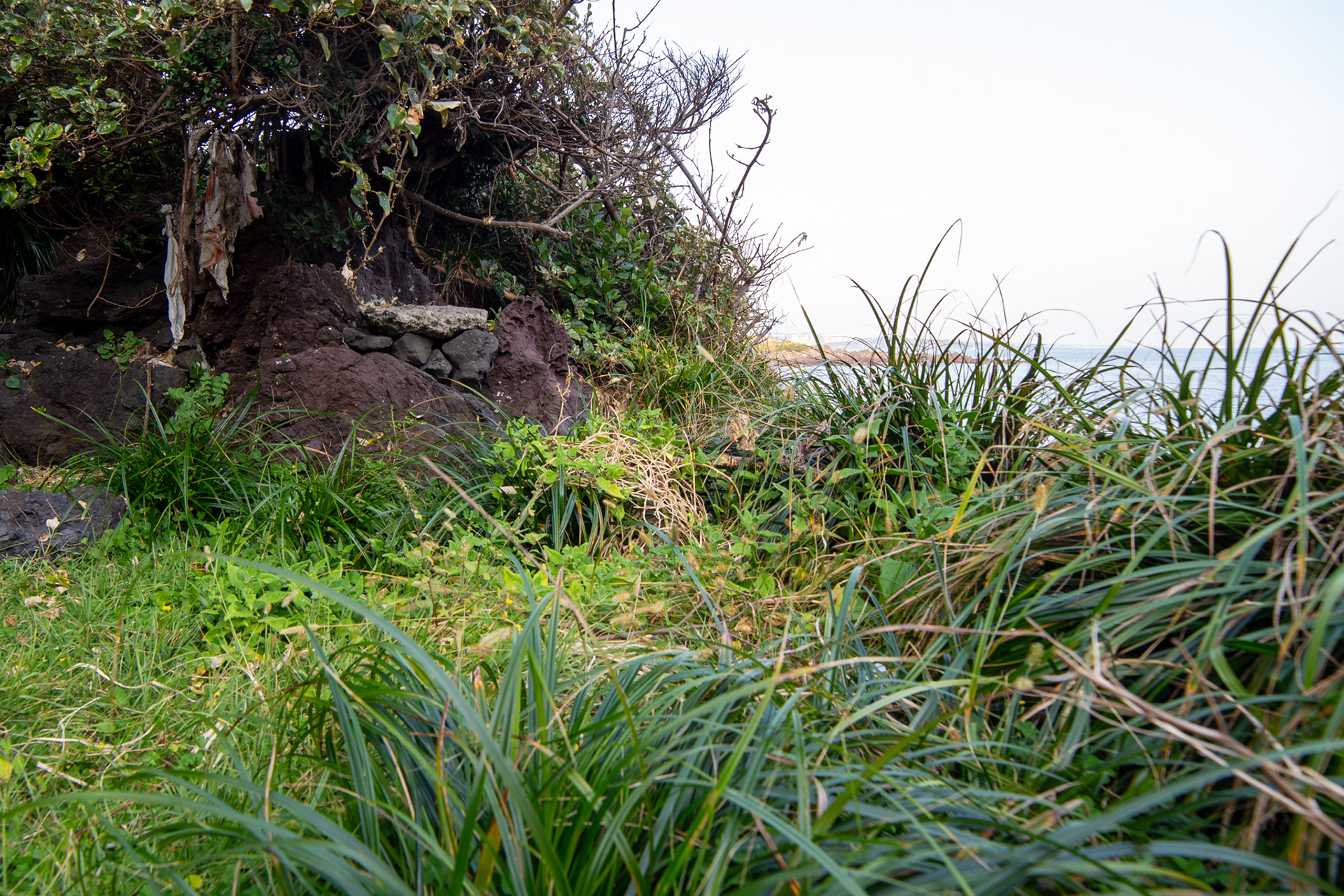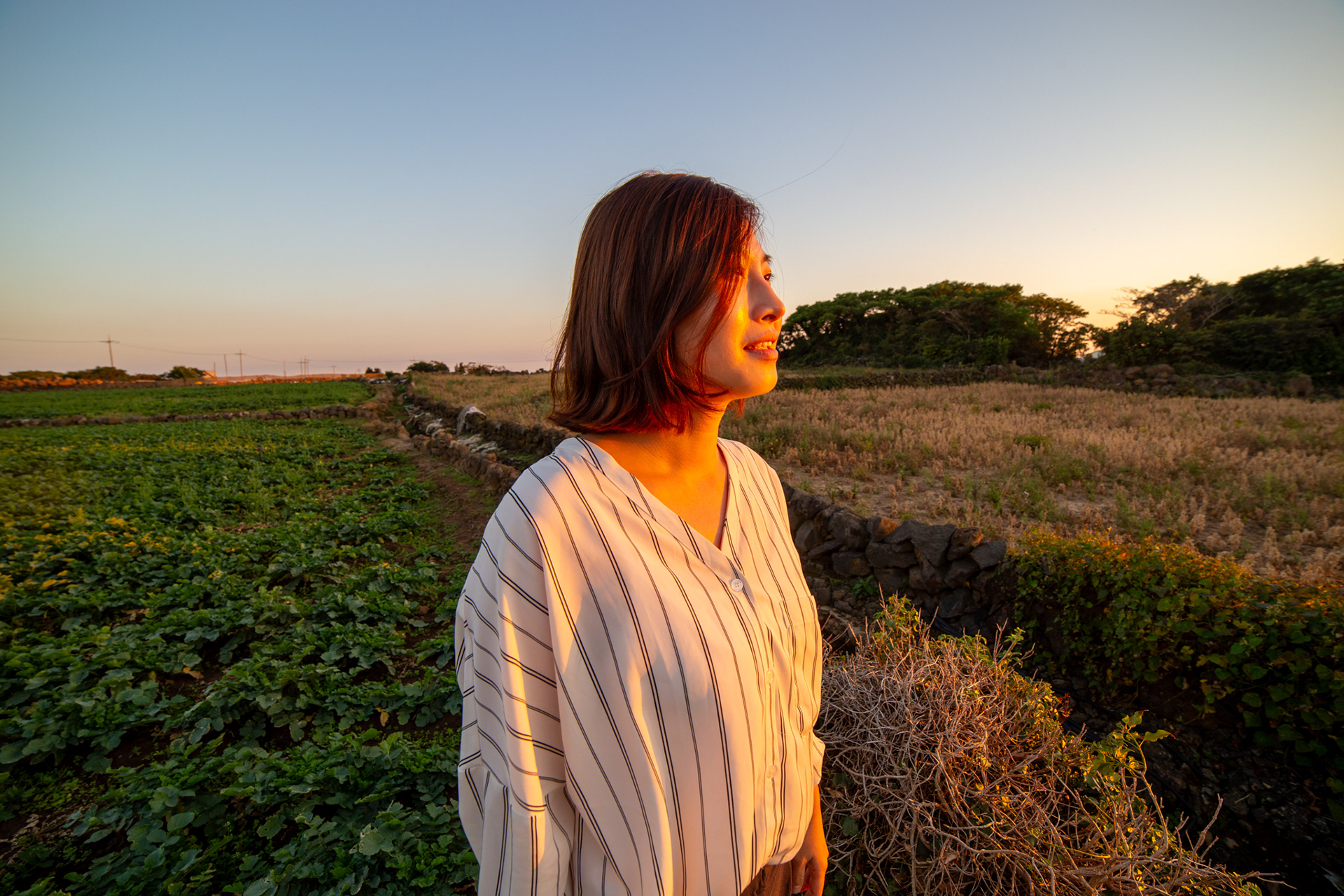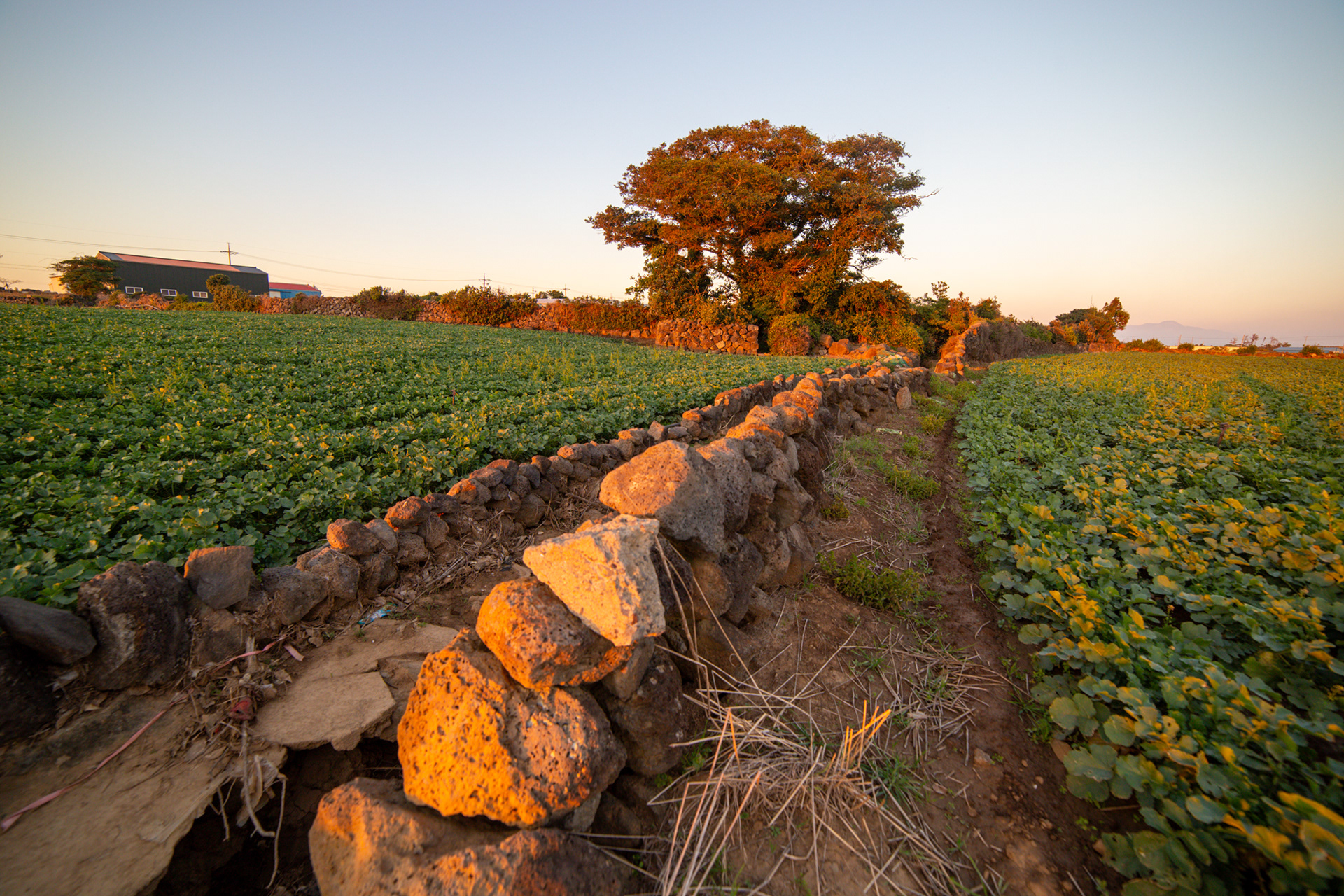On Sacred Trees
Researching sacred trees has taken me to many places around the world. I have traveled to Serbia where I visited communities that worship sacred trees dedicated to Ortho- dox saints and other venerated figures in Christian mytholo- gy. My travels took me to Greece and the Scottish Highlands. Soon I’ll visit Japan and Cuba. My readings on the topic led me to nearly every corner of the world. The center of my ex- perience with sacred trees is, of course, Jeju Island.
Nearly every village on Jeju Island has a sacred tree, or a number of sacred trees. No doubt in the past there were more of these trees than there are today. It is difficult to make a precise tally, in my opinion, not of current standing sacred trees, but of trees that once existed. This is because over the years such trees have suffered from attacks by land developers and others, political motivated initiatives, and Jeju Island’s many ‘lost villages’ also may have had a number of trees, some of which remain standing. Others fell at some point and weren’t replenished. In some cases, a number of shrines have been combined into one shrine, so that the number of shrines with trees was earlier greater.
In some ways, these missing sacred trees are still thriv- ing because they still stand in the memory of the villagers, and therefore the area is still considered a sacred shrine with its bonpuri myth intact. If I were to make a tally, I would like to include them in the total number.
In any case, Jeju Island’s sacred trees number in the hundreds. Some shamanic shrines have just one sacred tree, but others have several in a single shrine. In most cas- es a single tree is associated with one deity, but there seem to be cases too where while other trees surrounding the tree aren’t the specific ‘shinmok’ below which resides the deity, the trees are still revered in that they encircle and protect the shrine. So, for instance, if we look at the God- dess Miss Hyeon’s tree in Shincheon-ri, we might count a great number of trees surrounding the shrine as sacred. It would not be looked on kindly by locals if someone dam- aged those trees.
Trees are not always the primary feature of a sha- manic shrine. Sometimes a special stone or a cave are the primary objects of veneration. However, most often if you were to ask a rural Jeju Island resident what a shamanic shrine is, the person would lead with a statement about a sacred tree. ‘When you walk out in the village you will see a big tree in the distance. That tree is often much larger than other trees, and very old, sometimes four hundred years old. People believe our village gods live where that tree is.’ Most shrines with sacred stones and other objects also have sacred trees. Cave shrines also have trees sur- rounding them where locals hang cloth and other material offerings.
But why sacred trees? This is a question I’m pursuing in a forthcoming nonfiction book, a travelogue that hasn’t yet found a publisher. This is a question whose answer I believe has profound implications. The era of sacred tree worship,
a tradition that we moderns have found difficult to shake free of—we continue to bring trees into our homes around the time of the winter solstice in the West—this era is some- thing of a lost chapter in the history of human religions. But the tradition, once nearly universal, is still with us in many incarnations. On Jeju Island, it is still present in its ancestral form. It is alive like it used to be not so long ago in the days before the Abrahamic religions reached Europe.
a tradition that we moderns have found difficult to shake free of—we continue to bring trees into our homes around the time of the winter solstice in the West—this era is some- thing of a lost chapter in the history of human religions. But the tradition, once nearly universal, is still with us in many incarnations. On Jeju Island, it is still present in its ancestral form. It is alive like it used to be not so long ago in the days before the Abrahamic religions reached Europe.
When we visit sacred trees on Jeju Island, witness the shamanic rituals and culture around the trees, we can see into this past. We can feel what it is to have beneficent and sometimes harrowing gods nearby in village trees. The prayer performed below the branches of these trees, the myth telling and acting out of these myths, all the symbol- ogy associated with them and the emotions produced by visitors are all visible to us. We can experience the various zodiacal sororities and fraternities that village shrine visi- tors are divided into. So we can get an idea of how astron- omy works in this way within a group of people, when it is
a mainstay of their culture. We can get a sense of how these trees marked space, how they defined one community’s rela- tionship to others and to the outside.
a mainstay of their culture. We can get a sense of how these trees marked space, how they defined one community’s rela- tionship to others and to the outside.
On Jeju Island, a number of tree species can serve
as shamanic shrine trees. When a tree falls or is compro- mised its replacement is a tree of the same species. Per- haps some sense can be made of which species is chosen in which shrine situation. Researchers of shamanism on Jeju Island sometimes discuss this curious question. I have not delved deep into this matter, but a couple basic pat- terns come to mind. There is a goddess in Songdang-ri, considered one of the most significant goddesses on Jeju Island. She is known as Geumbaekjo among other names. She is an agricultural deity while her husband, an out-cast- ed hunting deity (ousted gods are a theme on Jeju Island), lives nearby in another shrine, now located in an area largely abandoned after the period of the April 3rd Upris- ing. It is believed that the children of this couple are eigh- teen mountain gods, whose shrines are located mostly in Jeju Island’s central east and central north. Typically these mountain gods’ trees are ‘paengnamu’ or hackberry trees.
as shamanic shrine trees. When a tree falls or is compro- mised its replacement is a tree of the same species. Per- haps some sense can be made of which species is chosen in which shrine situation. Researchers of shamanism on Jeju Island sometimes discuss this curious question. I have not delved deep into this matter, but a couple basic pat- terns come to mind. There is a goddess in Songdang-ri, considered one of the most significant goddesses on Jeju Island. She is known as Geumbaekjo among other names. She is an agricultural deity while her husband, an out-cast- ed hunting deity (ousted gods are a theme on Jeju Island), lives nearby in another shrine, now located in an area largely abandoned after the period of the April 3rd Upris- ing. It is believed that the children of this couple are eigh- teen mountain gods, whose shrines are located mostly in Jeju Island’s central east and central north. Typically these mountain gods’ trees are ‘paengnamu’ or hackberry trees.
At coastal shrines you won’t find hackberry trees very often, or at all, perhaps because periodic typhoon winds would topple them. Even at inland shrines these massive and ancient hackberries sometimes suffer damage from such storms. At coastal shrines you will find other species more suited for the particular environment. An example of one of these coastal shrines would be the shrine in On- pyoung-ri featured in this book.




Gwue
Below shrine trees in Jeju’s shamanic shrines, you will typically find a number of holes in the ground called ‘gwue’. These holes will be covered with rocks, usually large flat rocks that look purposely chosen for the task of covering the holes. At the beginning of a shamanic rite or a personal visit to the shrine by a village resident, the shaman or visitor will open these gwue by removing the stones. This is to signal to the gods that someone has arrived. That person carries of- ferings with them specifically prescribed for the god there- in. These are gifts, both material and eatable, that match the god’s taste. If there is more than one god at a shrine, the per- son must make specific offerings to each.
In Jeju shrines, there is often a sweet and rotten smell, due to rotting fruits and vegetables being common. The smell is present especially in summer when it’s hot. The smell is not overwhelming and one comes to like it over time. It is part of the mysterious experience of visiting a shrine. Many animals and insects eat leftover shrine offer- ings, which I explore in this book’s companion book called Scattering. I am fond of the smell of shrines, which I find pleasantly sweet, the smell of rotting fruit, alcohol and can- dle wax. Since many shrines have a cave or small cavern or spring, there is also a distinct sense of walking into a dis- creet sanctuary. The air becomes cooler and damper.
Ceremonies held at the foot of sacred trees involve a number of complicated processes, all led by the ‘shimbang’, or shaman. There is music, dancing, recitation of myths and village lore, divination, driving out of evil, fellowship and sharing of much practical information about the state of village affairs. Much of the ceremony is preoccupied with making an offering from the village to the shrine gods. They offer a grand feast that they lay upon the altar. They offer music and praise. In return the gods bestow them with divinatory revelations through the shaman, and with healing. When people visit shamanic shrines on their own they pray directly to the deity under the tree.
As I have mentioned, many cultures around the world have sacred tree traditions. However, few have an intact network of tree shrines that still embody the myths of their shamanic culture. To me, this has always been the most astounding cultural artifact on Jeju Island.
Tuesday, August 15th, 2023 Jeju Island, Donggwangyang